This guide to backpacking in Red River Gorge will walk you through how to find a campsite and what to know about the backcountry experience.
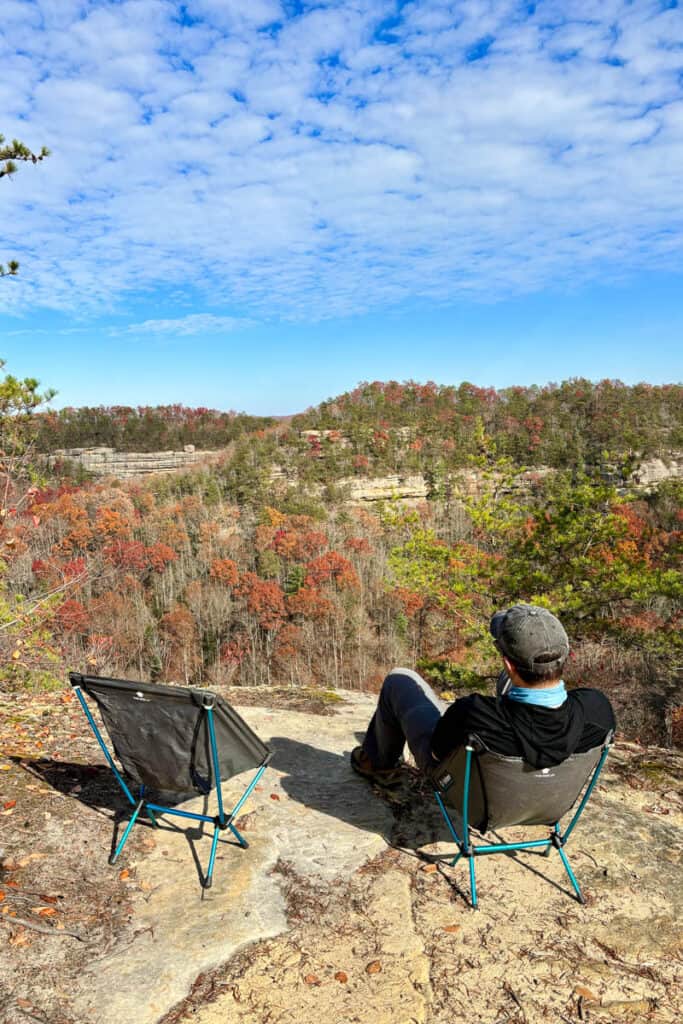
Visiting Kentucky's Red River Gorge is a treat. The opportunities for epic views, challenging trails and camping are almost endless.
We’ve enjoyed staying at established campgrounds in the area (like Koomer Ridge Campground), but there’s something exciting about finding a campsite in the backcountry.

If you like the idea of backpacking in Red River Gorge, here are some tips to help you plan a getaway!
Backpacking Trails in Red River Gorge
Sheltowee Trace is a through hike that passes through the area.
Otherwise, this area has a large number of interconnected official and unmarked user-created trails, like Jailhouse Rock, that can easily be combined into a multi-day hike.
See my guide to the best backpacking gear for equipment ideas.
Are There Fees for Backpacking in Red River Gorge?
The area is free for day use, but you do need to purchase a parking pass for overnight stays. (The cost is $5 for one night as of 2024.)
See the “Cumberland Ranger District” heading at the USDA's Forest Service website for up-to-date fee information for the whole region.
Or check out the “At a Glance” section on the Red River Gorge Forest Service page.
Backcountry Camping Rules
Brush up on the do's and don'ts of backcountry camping before you go. There aren't that many regulations, but they're important for keeping you safe in what can be a somewhat hazardous area.
- No backcountry camping is allowed within Natural Bridge State Park. If you’re hiking Sheltowee Trace, remember this point, because you’ll need to exit the state park before setting up camp.
- All campsites should be at least 300 feet from any official trail, road or stream.
- Campsites should not be within 100 feet of the base of any cliff or rock shelter. (Presumably because of rockfall.)
- Campsites should not be within 600 feet of Gray’s Arch.
- Some additional areas have “no camping” signs.
- Use proper food storage techniques. There are black bears in the area (more on that below).
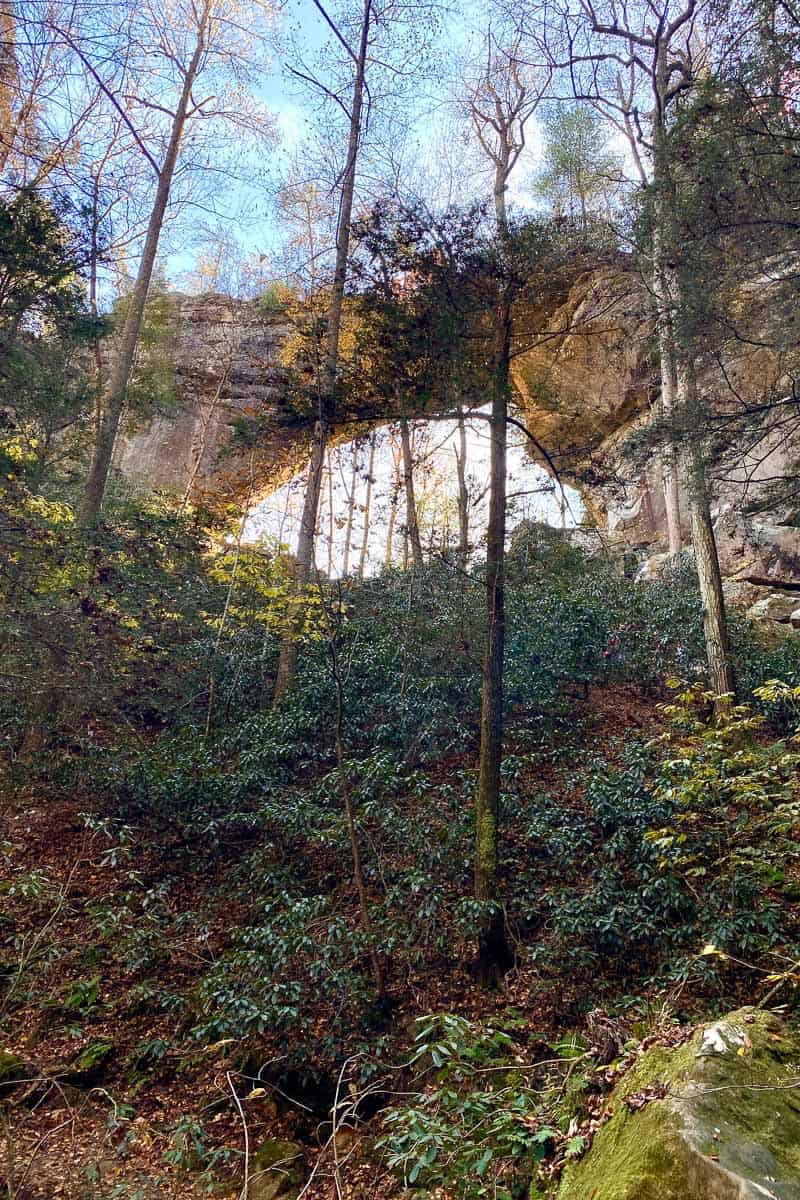
Finding Backcountry Campsites
Campsites are all on a first-come, first-served basis.
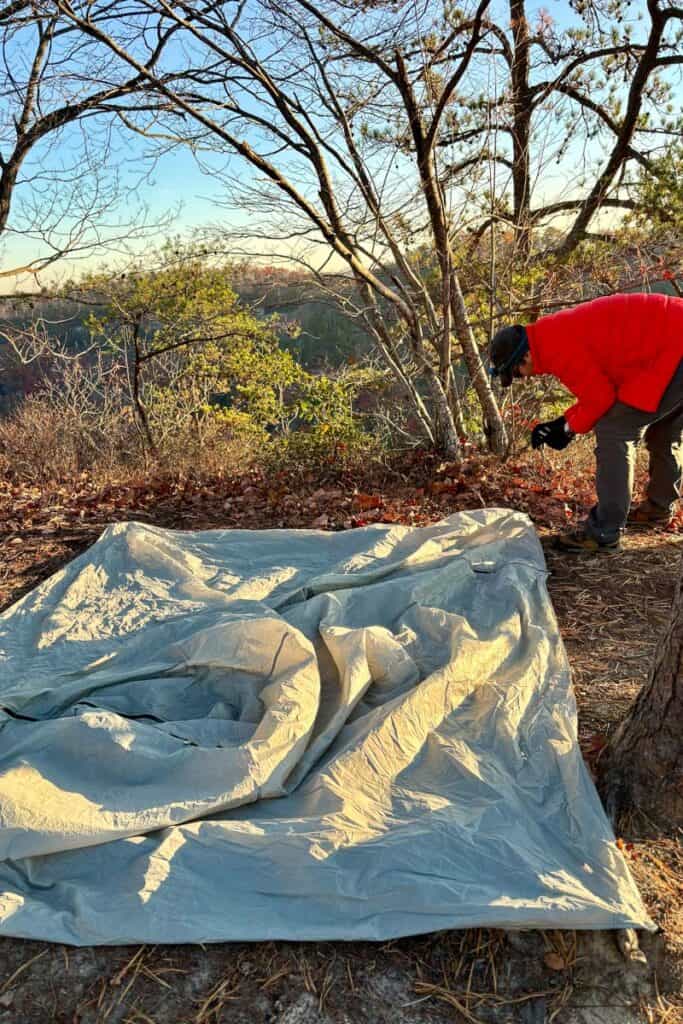
Locating campsites can be a little tricky, because most of them are located off unmarked side trails. (Not every unmarked side trail has a campsite.)
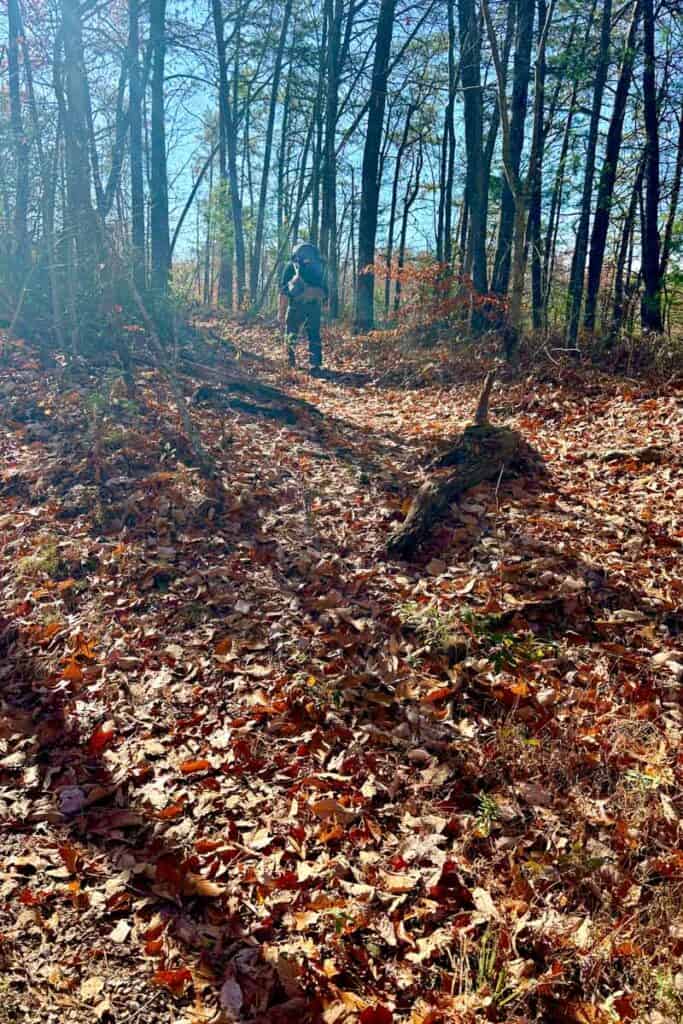
If you plan on backcountry camping in the area, I highly recommend picking up a copy of the book Hinterlands, which provides a fairly comprehensive overview of the side trails and user trails in the area (along with maps). It also notes side trails with campsites.
The author's other book, Red River Gorge Trail Guide, is a guide to all the official trails. I use these books together when planning a trip.
Additionally, be aware that there are multiple illegal campsites that you may pass while hiking, including several just off the Auxier Ridge trail. A good rule of thumb is, if you’re on an official trail and you can see the full camp area from the trail, it’s not far enough from the trail. Skip these spots.
Also, there are plenty of already established backcountry campsites in the area. Avoid unnecessarily creating new sites.
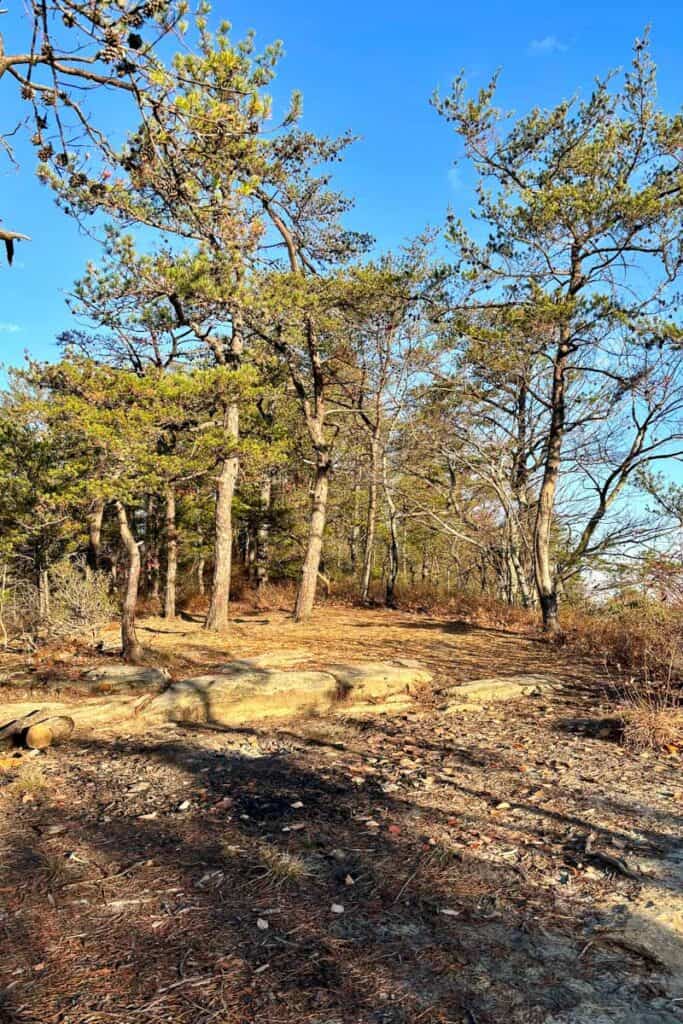
Staying Found in Red River Gorge
As mentioned above, the Red River Gorge has a lot of unofficial “user trails” that do not appear on official forest service maps. Do not rely on Google Maps in this area: most of the user trails don’t appear there either.
I’ve had good success with AllTrails, but make sure to download the maps you need ahead of time.
My favorite maps to use in this area are the ones in the books Red River Gorge Trail Guide and Hinterlands (especially Hinterlands), but I don’t want to carry those hefty books while hiking. I take photos of specific trail maps from these books to bring with me while hiking.
I’ve primarily been using my Garmin inReach Mini 2, along with the Garmin Explore app on my phone, and it’s been extremely reliable in this area.
Are Campfires Allowed?
Usually, but be aware that this area is prone to wildfires and can be very windy.
If you choose to have a campfire, keep it small, use a stone campfire ring (or a fire on a stone slab), and place it well away from brush or overhanging trees. Make sure your campfire is completely out before leaving the area.
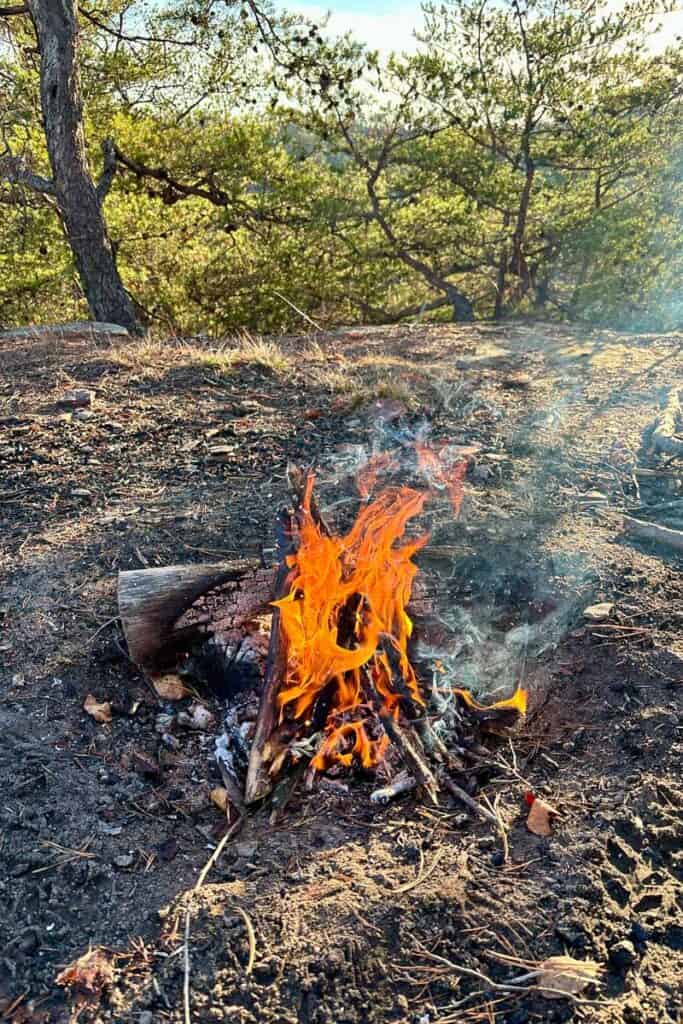
Also, check to make sure the area is not under a burn ban.
Visit Kentucky's Energy and Environment Cabinet webpage for a list of counties under burn bans or restrictions.
What counties do you need to look for on that list? Red River Gorge spans Menifee, Wolfe and Powell counties. Most of the hiking trails are in Wolfe County. Powell County is the Natural Bridge area where backcountry camping isn’t allowed.
We like packing along our Helinox ultralight camping chairs for sitting around the campfire or eating a meal.
Are There Really Bears?
There are, and while they aren’t as common as in some regions, it’s still smart not to tempt them with food in your tent.
Use a bear canister (we use this one) and place it at least 100 yards downwind of your tent, or store your food in a bear hang.
Drinking Water in the Backcountry
Be aware that most campsites along ridgelines are “dry” with no water sources. Campsites near creeks may have water, but may be dry depending on the time of year. (Fall can be very dry in Kentucky.)
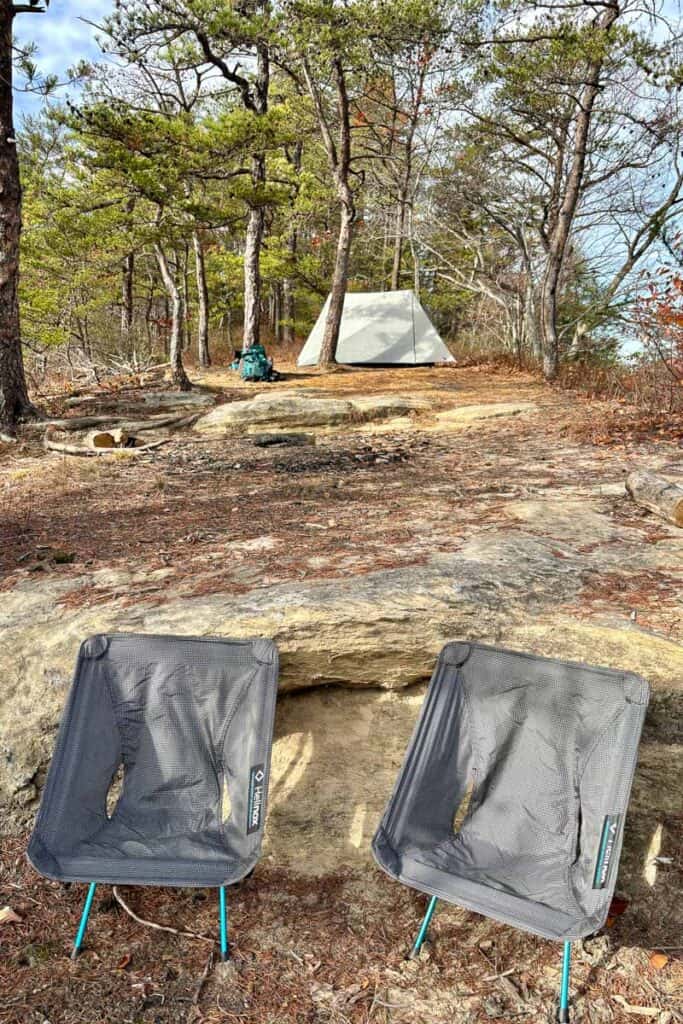
If you find water along your hike, make sure to filter it before drinking. (We use a Sawyer Squeeze.)
Will I Have a Cell Signal?
It’s possible, but don’t count on having it the entire time. Download any trail maps ahead of time.
In 2024 on Verizon towers, I often (but not always) had signals on ridges but not down in valleys.
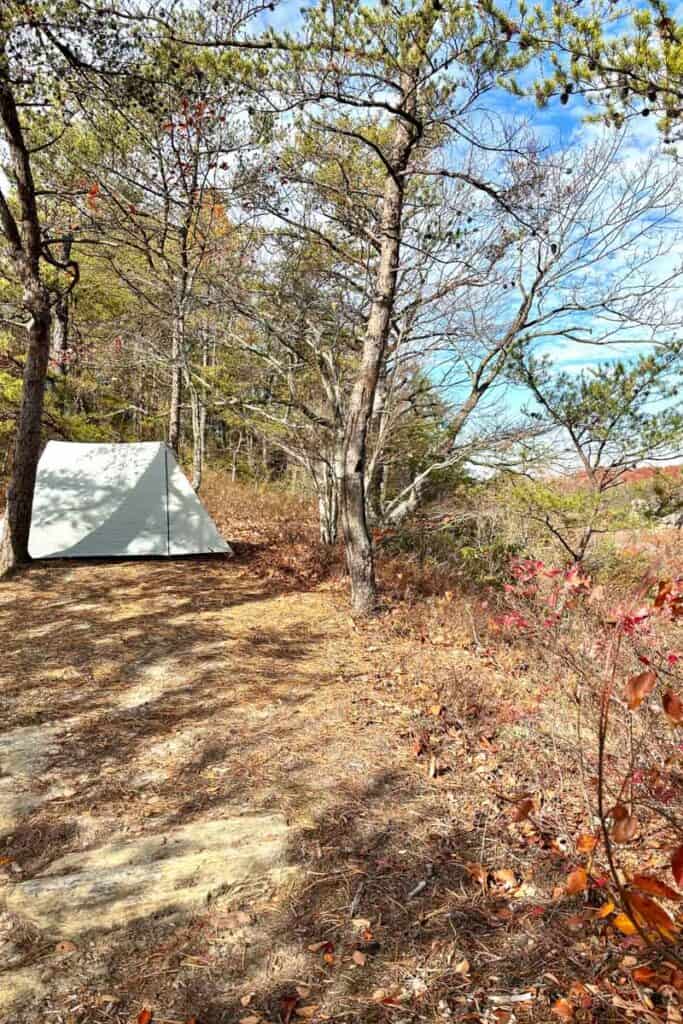
What Are Some Good Meal Options for Backpacking in Red River Gorge?
I recommend bringing a backpacking stove to heat water. This allows you to fix freeze-dried meals if you want something warm to eat.
See this post for a list of our favorite freeze-dried backpacking meals.

For other quick eats on the trail, consider some peanut butter granola that you can make at home, or a tuna couscous bowl.
Also, nothing beats an early morning cup of coffee with the sunrise. We love our hand-pump espresso machine and a Toaks titanium cup. Coffee also makes for a great scenic break on the trail: we've been known to stop and make a cup while hiking Hanson's Point.
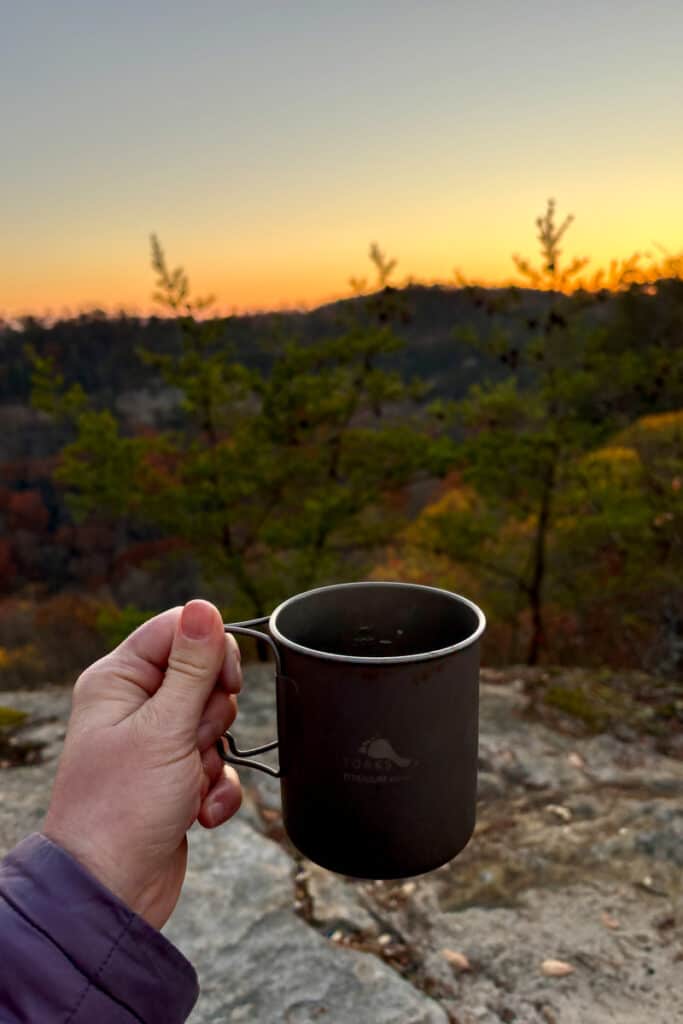
Do you have any other questions about backpacking in Red River Gorge? Let me know in the comments!

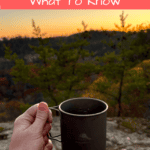
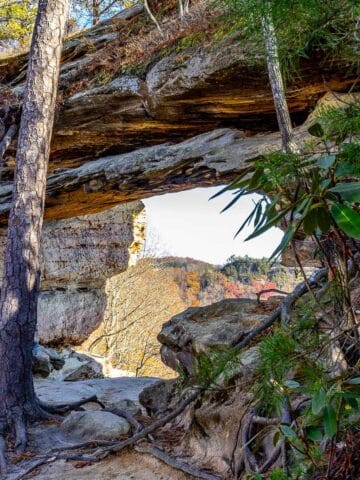
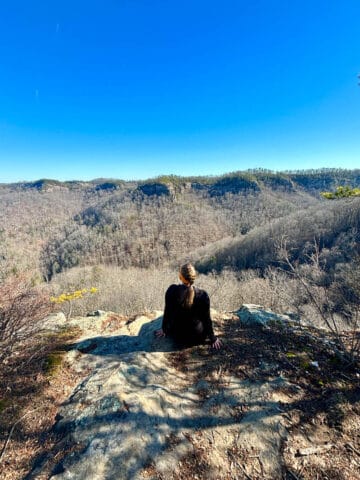
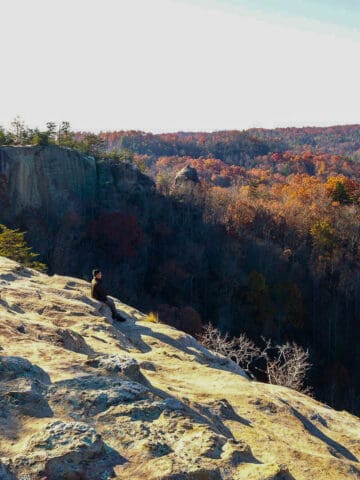
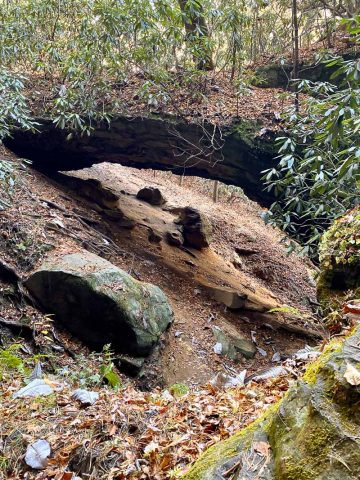
Leave a Comment: